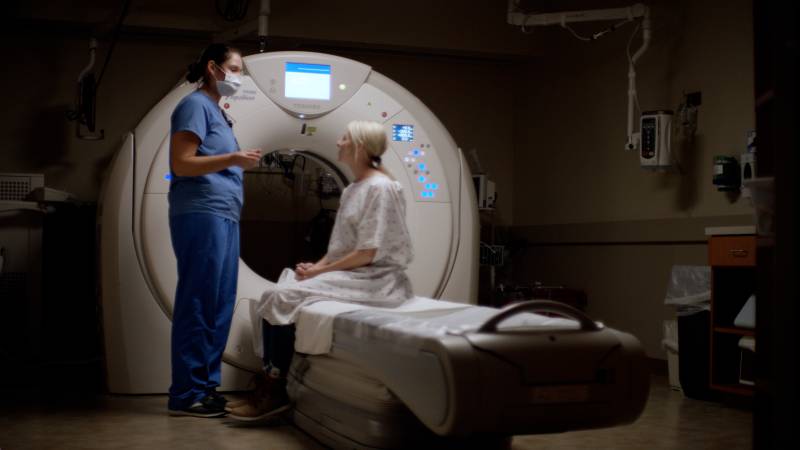Jack Hughes
Wednesday, August 12, 2020
Michael Johnson, OD
Published in
Foundation Board of Directors
Tagged under
Thursday, July 23, 2020
Welcome
Published in
Baby GalleryBanners
Tagged under
Monday, June 01, 2020
Scott Munger
Published in
Board of Directors
Tagged under
Wednesday, February 12, 2020
High Quality Imaging
Prairie Lakes Healthcare System uses sophisticated imaging technology that gives doctors the detailed information needed for early diagnosis and treatment -- without sending patients to other cities for these services.
In addition to general diagnostic, operative and emergency room X-rays, our Radiology Department offers imaging technology that can peer into your bones, arteries and veins, soft tissues and organs. We can help you see your unborn baby. We can also help predict whether you might be prone to help predict whether you might be prone to heart problems or a stroke.
Imaging Services:
CT Scanning- Computerized Tomography (CT) scanning provides rapid, high resolution scanning of the head, chest, abdomen and extremities by applying computer technology to medical X-rays. The scanner is primarily used to detect tumors, infections and vascular diseases. It is also valuable in the planning and follow-up of patients selected for radiation therapy of known tumors. We also offer Target Heart screenings to measure any calcium deposits in the heart that may put you at risk for a heart attack.
Magnetic Resonance Imaging (MRI)- MRI is a way to take very detailed pictures of the body and its chemical make-up. It is primarily used to image the brain, spine and joints. Unlike other modalities, it does not use ionizing radiation to obtain images.
Nuclear Medicine - Harmless amounts of radioactive isotopes are injected into the body. This material either collects in or avoids body tissue associated with particular diseases. The camera shows us where that material is accumulating.
Ultrasound - Prairie Lakes offers a variety of Ultrasound imaging procedures including obstetric/gynecologic, abdominal, vascular and cardiac (heart). Ultrasonic sound waves are used to produce images of the anatomy being scanned.
Bone density scans (DEXA) - A bone density scan uses low dose X-rays to see how dense (or strong) your bones are. These scans are often used to diagnose or assess your risk of osteoporosis. (Prairie Lakes Brown Clinic Northridge location only)
Mammography and breast imaging services - Uses a low-dose x-ray system to see inside the breasts detect cancer early. (Prairie Lakes Brown Clinic Main location only)
Radiology Specialists
Gwen Schaunaman, Radiologist, reads and interprets the radiology images and tests for patients at the Prairie Lakes Brown Clinic locations.
Prairie Lakes Healthcare System partners with Consulting Radiologists Ltd. (CRL) for radiology services. This allows Prairie Lakes access to over 50 board certified radiologists trained in subspecialties such as Diagnostic Neuroradiology, Interventional Neuroradiology, Diagnostic Radiology, Interventional Radiology, Musculoskeletal Imaging, Nuclear Medicine, Pediatric Imaging and Breast Imaging.
CRL’s general and subspecialty radiologists bring years of experience to patients, both in diagnosis and intervention. CRL provides 24/7 coverage for the Prairie Lakes Radiology Department.
Thursday, January 23, 2020
Your heart works 24/7. So do we.
Expert heart care is available at Prairie Lakes Healthcare System 24 hours a day, 7 days a week. With an on-site cath lab and a team of highly trained clinical staff and physicians, Prairie Lakes is equipped to handle emergencies and manage heart conditions.
General and Interventional Cardiology Services:
- Clinic Visits
- Consultations
- Heart Failure Program
- Non-Invasive Testing
- 24/7 Cardiology Coverage
- Cardiac Rehabilitation
- Pacemaker and Defibrillator Implantation
Interventional cardiologist, Dr. Kalaga, provides residents in northeastern South Dakota and western Minnesota elite cardiology services. The cardiology team provides both inpatient and outpatient services using state-of-the-art technology. Prairie Lakes' cardiologists work collaboratively with each other and primary care providers in the region to provide the best care possible.
Patients may make a clinic appointment by calling Prairie Lakes Cardiology at 605-882-7777 or toll-free at 1-800-907-6058.
Published in
Heart/Cardiology
Tagged under
Monday, December 09, 2019
Voice Box (Laryngeal) Cancer
Cancer of the voice box, or laryngeal cancer, is not as well known by the general public as some other types of cancer, yet it is not a rare disease. The American Cancer Society estimates that there will be about 13,150 new cases of laryngeal cancer (10,490 new cases in men and 2,660 new cases in women), and about 3,710 deaths from laryngeal cancer (2,970 men and 740 women). Even for survivors, the consequences of laryngeal cancer can be devastating with respect to voice, breathing, or swallowing. It is a preventable disease, however, since the primary risk factors for laryngeal cancer are associated with changeable behaviors in lifestyle.
Published in
ENT Health Resource Library
Tagged under
Monday, December 09, 2019
Tonsils and Adenoids
Tonsils are the two round lumps in the back of your throat. Adenoids are high in the throat behind the nose and the roof of the mouth (referred to as your soft palate). They are not visible through the mouth or nose without special instruments. Tonsils and adenoids are part of the immune system and help protect the body from disease. They “sample” bacteria and viruses that enter through the mouth or nose. Unfortunately, sometimes they can get infected or cause problems by being too large.
Published in
ENT Health Resource Library
Tagged under
Monday, December 09, 2019
Tinnitus
Over 50 million Americans have experienced tinnitus, or ringing in ears, which is the perception of sound without an external source being present. Persistent tinnitus lasts more than six months. Prior to any treatment, it is important to undergo a thorough examination and evaluation by an ENT (ears, nose, and throat) specialist, or otolaryngologist, and an audiologist. Your understanding of tinnitus and its causes will enhance your treatment.
Published in
ENT Health Resource Library
Tagged under
Monday, December 09, 2019
Sore Throats
Sore throats happen to everyone now and then. When you have a sore throat, this can affect speaking, swallowing, or breathing. Infections from viruses or bacteria are the main cause of sore throats, but allergies and sinus infections can also contribute. Some sore throats are worse than others. If you have a sore throat that lasts for more than five to ten days, you should see your doctor.
Published in
ENT Health Resource Library
Tagged under
We See You living your life
And we're here for you with the latest technology and medical expertise you need to live your best life possible.
Orthopedics
Glacial Lakes Orthopedics is now Prairie Lakes Orthopedics.
Join Our Team
Over 600 staff members and 200 volunteers make our regional healthcare system one of the top rural health systems.
Available Services
Prairie Lakes Healthcare System offers a wide range of medical services for people who call northeastern South Dakota and western Minnesota home.
Surgical Services
Our team is here for urgent procedures like appendix removal and scheduled surgeries like joint replacement.
Dermatology
Feel good about your skin’s health. Our specialists offer individualized treatment plans and cosmetic options.
We can help you find a doctor. Call 605-882-7000 or search online.















